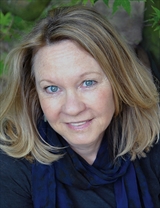Every year, I check my blog to see if I met my reading challenge goals. I was a little late in doing so this year, but I did want to see how I did. Some years I am better at keeping track throughout the year, but this was not one of those years.
I’ll list the books for each challenge and link to the reviews below.
2015 Poetry Reading Challenge (Goal is to read 1 book or 20 individual poems):
- Joy Street by Laura Foley (review)
- Silent Flowers: A New Collection of Japanese Haiku Poems edited by Dorothy Price (review)
- WET by Toni Stern (review)
- Crow-Work by Eric Pankey (review)
- Doll God by Luanne Castle (review)
- Paradise Drive by Rebecca Foust (review)
- The Robot Scientist’s Daughter by Jeannine Hall Gailey (review)
- Pictograph: Poems by Melissa Kwasny (review)
- Vessel: Poems by Parneshia Jones (review)
- Medic Against Bomb: A Doctor’s Poetry of War by Frederick Foote (review)
- Banned for Life by Arlene Ang (review)
- Free Air: Poems by Joe Wenke (review)
- Remember the Sun: Poems of Nature and Inspiration by Melanie Simms (review)
- The Antigone Poems by Marie Slaight (review)
- Looking for Potholes by Joe Wenke (review)
- Double Jinx by Nancy Reddy (review)
- Pride & Prejudice: Retold in Limericks by Seamus O’Leprechaun (review)
- Lost and by Jeff Griffin (review)
- The Book of Goodbyes by Jillian Weise (review)
- Ohio Violence by Alison Stine (review)
- Firefly July: A Year of Very Short Poems selected by Paul B. Janeczko (review)
- Citizen: An American Lyric by Claudia Rankine (review)
- Changes: A Child’s First Poetry Collection by Charlotte Zolotow (review)
- Brown Girl Dreaming by Jacqueline Woodson (review)
- Red Sox Rhymes: Verses and Curses by Dick Flavin (review)
- Goodnight Songs: A Celebration of the Seasons by Margaret Wise Brown (review)
- Wet Silence by Sweta Srivastava Vikram (review)
- Dark Sparkler by Amber Tamblyn (review)
- The Same-Different: Poems by Hannah Sanghee Park (review)
- The Uncertainty Principle: Poems by Roxanna Bennett (review)
- Strange Theater by John Amen (review)
- Teacher’s Pets by Crystal Hurdle (review)
- All the Words Are Yours: Haiku on Love by Tyler Knott Gregson (review)
- Underdays: Poems by Martin Ott (review)
- National Geographic Book of Nature Poetry: More than 200 Poems With Photographs That Float, Zoom, and Bloom! by J. Patrick Lewis (review)
2015 War Through the Generations – Read Any War (read any # of books about any war):
- After the War Is Over by Jennifer Robson (review) WWI
- War’s Trophies by Henry Morant (review) Vietnam War
- The Secret of Magic by Deborah Johnson (review) WWII
- The Trigger: Hunting the Assassin Who Brought the World to War by Tim Butcher (review) WWI
- Medic Against Bomb: A Doctor’s Poetry of War by Frederick Foote (review) Iraq Wars
- The Mapmaker’s Children by Sarah McCoy (review) U.S. Civil War
- The House of Hawthorne by Erika Robuck (review) U.S. Civil War
- The Cherry Harvest by Lucy Sanna (review) WWII
- The Prince by Niccolò Machiavelli (review) War in general
- The Great War: Stories Inspired by Items from the First World War illustrated by Jim Kay (review) WWI
- Mireille by Molly Cochran (review) WWII
- Crooked Heart by Lissa Evans (review) WWII
- The Last Summer at Chelsea Beach by Pam Jenoff (review) WWII
- The Race for Paris by Meg Waite Clayton (review) WWII
- The Small Backs of Children by Lidia Yuknavitch (review) Bosnia War
- Longbourn’s Songbird by Beau North (review) WWII
2015 New Authors Challenge (read 50 New-to-Me Authors):
- Jewel Kats
- Henry Morant
- Deborah Johnson
- Mallory Ortberg
- Andy Miller
- Tony Stern
- Lorna Schultz Nicholson
- Dora Levy Mossanen
- Tim Butcher
- Rebecca Skloot
- Luanne Castle
- Mallory Kasdan
- Danielle Paige
- Jan Hahn
- Rebecca Foust
- Melissa Kwasny
- Parneshia Jones
- Frederick Foote
- Joe Wenke
- Melanie Simms
- Natural History Museum
- Marie Slaight
- Greil Marcus
- Nancy Reddy
- Jeff Griffin
- Seamus O’Leprechaun
- Erika Robuck
- Abigail Samoun
- Jillian Weise
- Jo Nesbo
- William Todd Rose
- Alison Stine
- Lisa Pliscou
- Paul B. Janeczko
- Claudia Rankine
- Charlotte Zolotow
- Jacqueline Woodson
- Richard Torrey
- Jo Baker
- Richard Fairgray
- Jonathan Lethem
- Margaret Peot
- Jim Kay, various
- Mi-ae Lee
- Ae-hae Yoon
- Judith Fertig
- Robert C. O’Brien
- Cassie Premo Steele
- Maria Grace
- Hee Jung Chang
- Molly Cochran
- Bryan Ballinger
- Lissa Evans
- Matthew Jervis
- Kim Norman
- Dick Flavin
- Gillian Flynn
- Geert de Kockere
- Susan Andra Lion
- Rachel Simon
- Meg Waite Clayton
- Lidia Yuknavitch
- L. Shapley Bassen
- Amber Tamblyn
- Hannah Sanghee Park
- Roxanna Bennett
- Bella Forrest
- Nuala O’Connor
- Anna Llenas
- Lauren Redniss
- Lisa Maggiore
- Martin Ott
- Joe Hill
- Anne Margaret Lewis
- Catherine Bailey
- Maggie Stiefvater
- Jean P. Moore
- Linda Ashman
- Beau North
- Terry Border
- Kate Louise
- Clement C. Moore
- Kimberly Knutsen
- Ree Drummond
- Alexander McCall Smith
- Jussi Adler Olsen
That’s it for me in 2015; now I have to really start thinking about 2016 challenges.
There will be a poetry reading challenge announcement soon!





 About the Author:
About the Author:

 About the Author:
About the Author:


 About the Author:
About the Author:
 About the Author:
About the Author:



 About the Author:
About the Author:
 About the Author:
About the Author:








